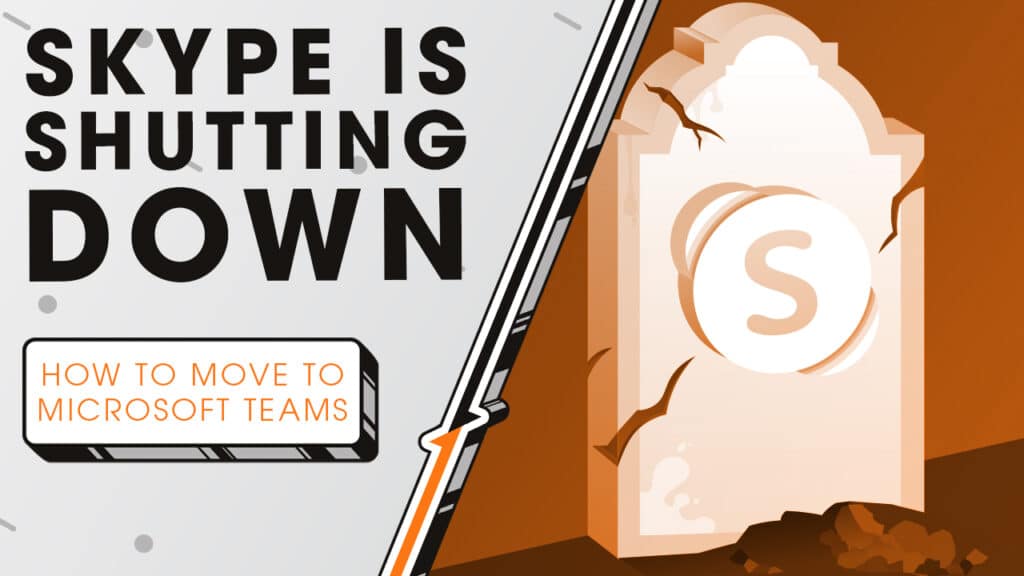Skype Is Shutting Down | How to Move to Microsoft Teams | Sync Up

Skype is shutting down. After more than 20 years, Microsoft is officially retiring the once-popular messaging and calling app. We’ll explain why Microsoft is pulling the plug and your options for migrating to a different service as we sit down and sync up with Rocket IT’s weekly technology update.
In this episode you’ll hear about:
- Why skype is shutting down after 20+ years.
- Microsoft’s reason for ending Skype.
- What’s replacing Skype.
- What happens to your data.
- How long you have to decide where you’ll migrate.
- Which Skype features won’t carry over.
Video Transcript
Microsoft is shutting down Skype because, simply put, people have moved on. When Skype first launched, it was groundbreaking. But over time, faster internet, cheaper mobile data, and the rise of apps like FaceTime, WhatsApp, and Zoom made Skype less relevant. Even during the early days of the COVID-19 pandemic, when video calls became more important than ever, people weren’t turning to Skype—they were using Zoom and Microsoft Teams instead. While Skype’s user base hasn’t dramatically declined, it also hasn’t grown the way Microsoft expected. That’s why Microsoft is making the move to Teams, a platform that has become its primary focus.
Microsoft Teams Free will officially replace Skype. If you’re a Skype user, your contacts, call logs, and messages will be automatically migrated to Teams. You won’t need to create a new account—just log in with your existing credentials, and everything will be there. Group chats will stay intact, and for those who don’t want to switch, Microsoft is offering an option to export chat history and images. Skype will remain online until May 5, 2025, giving users a little over 60 days to either move to Teams or export their data. During this transition period, Skype and Teams will still be able to communicate with each other, so Skype users can message Teams users and vice versa before Skype shuts down for good.
One major feature won’t be making the transition to Teams, and that’s Skype’s ability to call landlines and mobile numbers. Microsoft is removing all telephony services, meaning domestic and international calling through Skype will no longer be possible. Years ago, this feature was a huge deal because calling over the internet was much cheaper than using traditional phone lines. But today, with so many apps offering free calls, there’s just not enough demand to keep Skype’s paid calling features alive.
If you have Skype Credit or a Skype subscription, you’ll still be able to use any remaining balance inside Teams, but only until your next renewal period. After that, Skype’s calling features will disappear, and Microsoft won’t allow new purchases. If you have a Skype Number, you’ll need to transfer it to another provider before May 5, 2025, because Microsoft will no longer support it.
At one point, Microsoft thought it could maintain Skype for personal use and Teams for business, but as Teams grew more advanced, that strategy no longer made sense.
Skype had a great run, but Microsoft has made it clear—Teams is the future. If you haven’t switched yet, now’s the time to start thinking about it. And for businesses, making the transition isn’t always as simple as logging into a new app. If your company relies on Skype for internal communication or customer calls, now is the time to find an IT partner, like Rocket IT, that can help ensure a smooth transition to Teams. Waiting until the last minute could mean lost contacts, disrupted workflows, or unexpected downtime. If you want to make sure your team is prepared, simply contact Rocket IT using the link in this video’s description. And to stay up to date on trending technology news, hit that subscribe button and the bell to catch us on next week’s episode of Sync Up with Rocket IT.
Related Posts
Subscribe to Rocket IT's Newsletter
Stay up to date on trending technology news and important updates.

Find out if Rocket IT is the right partner for your team
Claim a free consultation with a technology expert.










